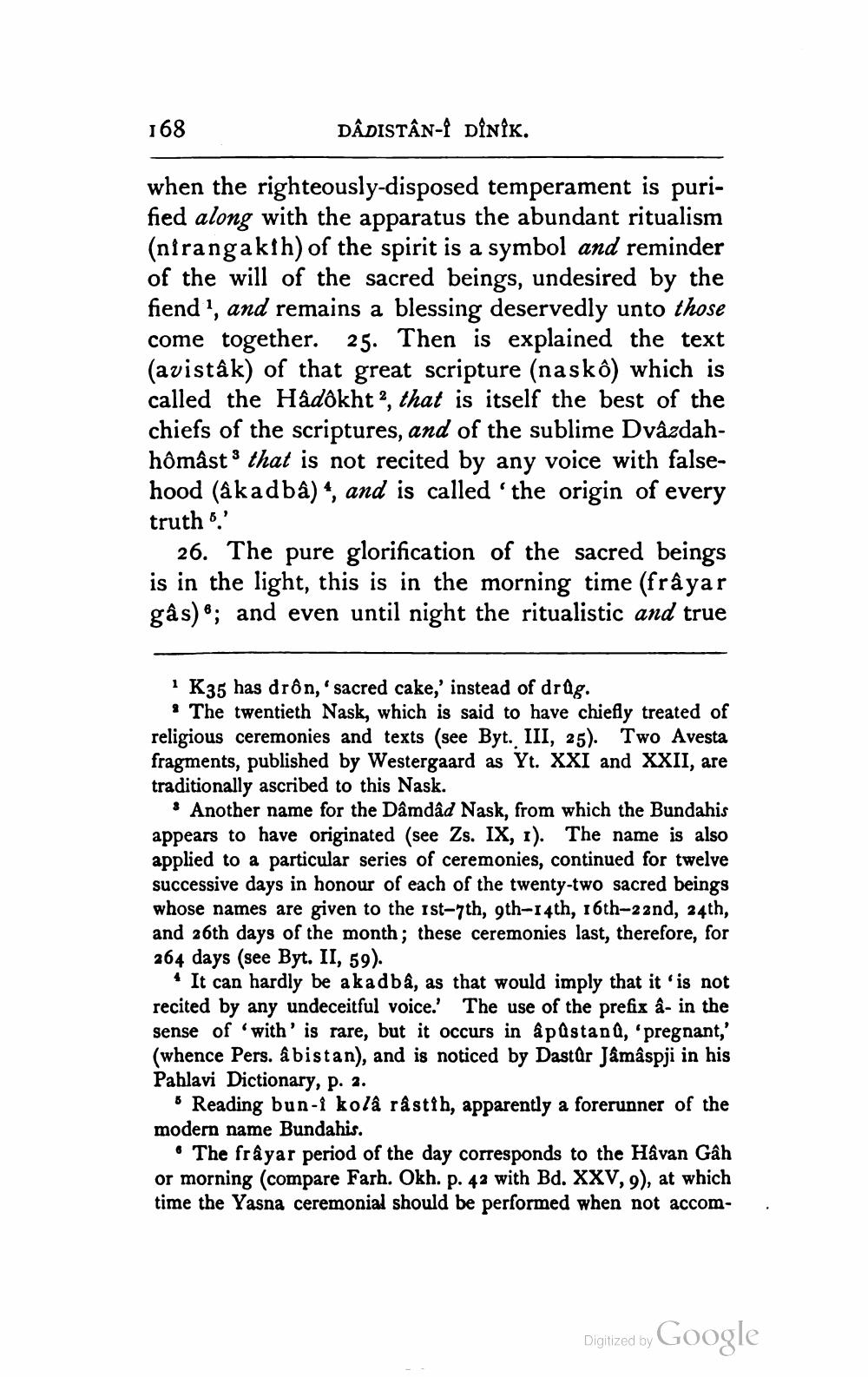________________
168
DÂDISTÂN-I DÎNÍK.
when the righteously-disposed temperament is purified along with the apparatus the abundant ritualism (nirangakih) of the spirit is a symbol and reminder of the will of the sacred beings, undesired by the fiend", and remains a blessing deservedly unto those come together. 25. Then is explained the text (avistâk) of that great scripture (naskô) which is called the Hâdôkht”, that is itself the best of the chiefs of the scriptures, and of the sublime Dvâzdahhômâsts that is not recited by any voice with falsehood (akadba) 4, and is called 'the origin of every truth.'
26. The pure glorification of the sacred beings is in the light, this is in the morning time (frâyar gâs) *; and even until night the ritualistic and true
1 K35 has drôn,' sacred cake,' instead of drug.
· The twentieth Nask, which is said to have chiefly treated of religious ceremonies and texts (see Byt. III, 25). Two Avesta fragments, published by Westergaard as Yt. XXI and XXII, are traditionally ascribed to this Nask.
. Another name for the Dâmdâd Nask, from which the Bundahis appears to have originated (see Zs. IX, 1). The name is also applied to a particular series of ceremonies, continued for twelve successive days in honour of each of the twenty-two sacred beings whose names are given to the 1st-7th, 9th-14th, 16th-22nd, 24th, and 26th days of the month; these ceremonies last, therefore, for 264 days (see Byt. II, 59).
" It can hardly be akadbâ, as that would imply that it is not recited by any undeceitful voice. The use of the prefix a- in the sense of with' is rare, but it occurs in apastang, 'pregnant,' (whence Pers. & bistan), and is noticed by Dastûr Jamâspji in his Pahlavi Dictionary, p. 2.
• Reading bun-i kolâ râstih, apparently a forerunner of the modern name Bundahis.
• The frayar period of the day corresponds to the Havan Gâh or morning (compare Farh. Okh. p. 42 with Bd. XXV, 9), at which time the Yasna ceremonial should be performed when not accom
Digitized by Google




